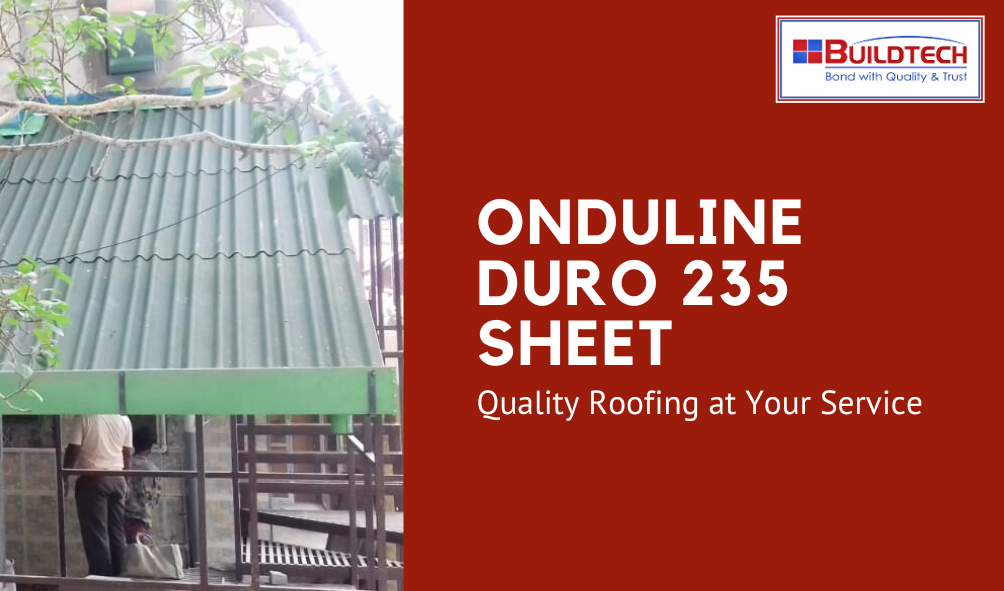What is ONDULINE Roofing Systems Material Made Of?
What is ONDULINE Roofing Systems Material Made Of? A Comprehensive Guide for Industrial, Residential, and Small Business Owners Introduction ONDULINE roofing systems have gained popularity among industrial, residential, and small business owners due to their durability, lightweight design, and aesthetic appeal. Understanding the materials that makeup ONDULINE roofing systems is crucial for making informed decisions about roofing solutions. This article will delve into the composition of ONDULINE roofing materials, focusing on various types such as ONDULINE sheets, ONDULINE Classic Sheets, ONDULINE Tiles, and ONDULINE Duro sheets. Overview of ONDULINE Roofing Systems What is ONDULINE? ONDULINE is a brand known for its innovative roofing solutions that cater to various construction needs. The roofing materials are designed to be lightweight, durable, and resistant to environmental factors, making them suitable for different applications, from residential homes to industrial buildings. Key Features of ONDULINE Roofing Composition of ONDULINE Roofing Materials Primary Materials Used in ONDULINE ONDULINE roofing systems are primarily made from the following materials: Types of ONDULINE Roofing Sheets Benefits of ONDULINE Roofing Systems 1. Weather Resistance ONDULINE roofing systems are designed to withstand various weather conditions, including heavy rain, snow, and strong winds. The waterproofing properties of bitumen, combined with the structural integrity provided by cellulose fibers, ensure that these roofing systems protect buildings from moisture infiltration. 2. Thermal Insulation ONDULINE roofing sheets provide excellent thermal insulation, helping to regulate indoor temperatures. This insulation property can lead to energy savings by reducing the need for heating and cooling systems, making ONDULINE an energy-efficient choice for property owners. 3. Sound Insulation The composition of ONDULINE roofing sheets also contributes to sound insulation. The materials used in their construction help to dampen noise from rain, hail, and other external sounds, creating a quieter indoor environment. 4. Easy Installation The lightweight nature of ONDULINE roofing materials makes them easy to handle and install. This can significantly reduce labor costs and construction time, making ONDULINE an attractive option for property owners. 5. Low Maintenance ONDULINE roofing systems require minimal maintenance compared to traditional roofing materials. Regular inspections and occasional cleaning are typically sufficient to keep the roofing in good condition, saving property owners time and money. 6. Eco-Friendly With a focus on sustainability, ONDULINE roofing materials are made from recycled and environmentally friendly components. This makes them a responsible choice for property owners looking to reduce their environmental impact. Applications of ONDULINE Roofing Systems Residential Applications ONDULINE roofing systems are widely used in residential construction due to their lightweight, durable, and aesthetically pleasing properties. Common applications include: Industrial Applications In industrial settings, ONDULINE roofing systems are valued for their durability and resistance to harsh conditions. Applications include: Small Business Applications Small business owners can benefit from ONDULINE roofing systems in various ways: Considerations for Choosing ONDULINE Roofing 1. Local Climate When selecting ONDULINE roofing materials, consider the local climate and weather conditions. ONDULINE roofing systems are designed to withstand various weather challenges, but specific types may be better suited for certain environments areas. 2. Building Structure Assess the structural requirements of the building before choosing ONDULINE roofing. Ensure that the roofing system selected is compatible with the building’s design and load-bearing capacity. 3. Aesthetic Preferences ONDULINE roofing sheets are available in various colors and styles. Consider the aesthetic preferences of the property owner and how the roofing will complement the overall design of the building. 4. Installation Expertise Proper installation is crucial for the performance and longevity of ONDULINE roofing systems. Hiring experienced contractors familiar with ONDULINE products can ensure a successful installation process. Maintenance of ONDULINE Roofing Systems Regular Inspections Conducting regular inspections of ONDULINE roofing systems is essential to identify any signs of wear, damage, or moisture infiltration. Early detection can prevent more significant issues down the line. Cleaning Keeping ONDULINE roofing sheets clean is crucial for maintaining their appearance and performance. Regular cleaning with mild detergents and water can help preserve the roofing material’s condition. Repairing Damage In the event of damage, such as punctures or tears, prompt repairs are necessary to prevent water infiltration. Conclusion ONDULINE roofing systems offer a durable, lightweight, and aesthetically pleasing solution for industrial, residential, and small business applications. Composed primarily of bitumen, cellulose fibers, and mineral fillers, ONDULINE roofing materials provide excellent waterproofing, thermal insulation, and sound insulation properties. By understanding the composition and benefits of ONDULINE roofing systems, property owners can make informed decisions that enhance the longevity and efficiency of their buildings. Whether you are constructing a new facility or renovating an existing space, ONDULINE Roofing offers a reliable and eco-friendly solution that stands the test of time. So, contact us if you need product advice or want to discuss your project requirements. Please click the link below. https://www.facebook.com/buildtechroof/ #factory #supplier #performance #order #quality #buildingmaterials #india #productions #thickness #avilablenow #manufacturing
What is ONDULINE Roofing Systems Material Made Of? Read More »

